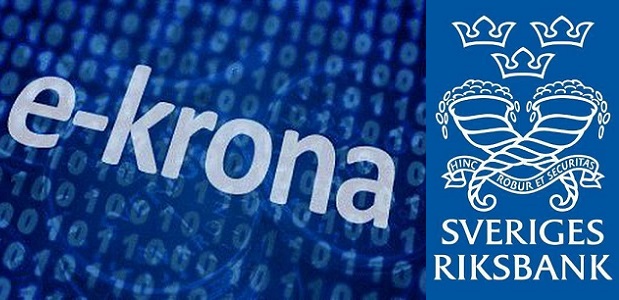
Sweden’s central bank has announced plans to include other banks in the coming year to test how the e-krona could handle commercial and retail payments in the real world.
The solution based on blockchain technology that has been developed and tested by the Riksbank in its e-krona project provides new possibilities, but is also new and needs further investigation. This is one of the lessons learned as described in the e-krona pilot project’s report on its first phase, accordint to the press release.
The e-krona pilot has the objective of testing a proposal for a technical solution to increase the Riksbank’s knowledge of how an e-krona could function and be used as a complement to cash.
The tested solution is based on Distributed Ledger Technology (DLT) and a blockchain technology where the e-kronor take the form of ‘tokens’, digital units containing information on value and origins.
The main purpose of the pilot project is for the Riksbank to increase its knowledge of what form a central bank digital currency might take and showing in a test environment how this e-krona could be used by the general public. However, as yet there is no decision on issuing an e-krona, on how an e-krona might be designed or what technology might be used.
In a new report the e-krona pilot project presents the lessons learned from the first phase of the project, including:
The technology provides new possibilities, but requires further investigation. The technology gives the possibility to create uniquely identifiable e-kronor, but is untried when it comes to processing retail payments in the magnitude and with the safety level required by a central bank digital currency.
Different forms of storage of tokens and keys provide different properties. The way the money is stored should ultimately be determined by which functions are given priority in the e-krona. One important question is whether the e-krona will function even without access to the internet, what is known as off-line functionality, a possibility the project has not yet tested.
A parallel network makes the payment system more robust. A solution based on blockchain technology and tokens means that one creates an infrastructure that to a great extent functions parallel to today’s payment infrastructure.
The e-krona pilot project’s report on the first phase of the project describes in brief the technical solution tested and the legal analyses made of the solution. The report also contains an account of the overall lessons learned from the project.
Next step
The Riksbank has decided to extend the agreement with Accenture as technical supplier to continue testing the possibilities of the technical solution. The focus for phase 2 will be to include potential distributors of the e-krona as participants in the network in order to test how an integration with their internal systems could function with the e-krona network. The solution’s ability to store tokens and their keys in different ways, and the capacity for off-line payments will also be investigated further. Continued testing of the solution’s performance for retail payments will also be prioritised in phase 2.
_____________
Related content
Banking 4.0 – „how was the experience for you”
„To be honest I think that Sinaia, your conference, is much better then Davos.”
Many more interesting quotes in the video below: